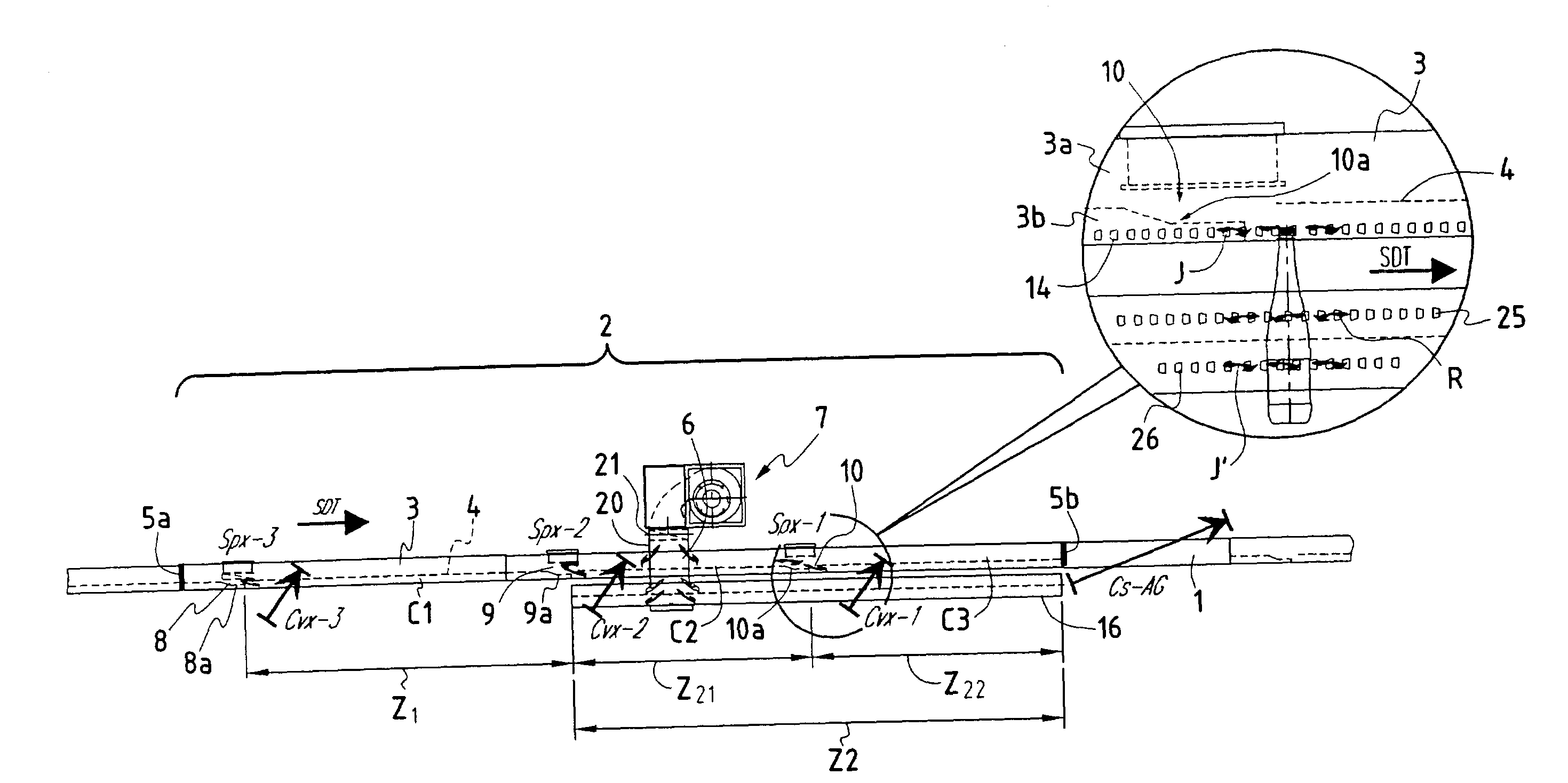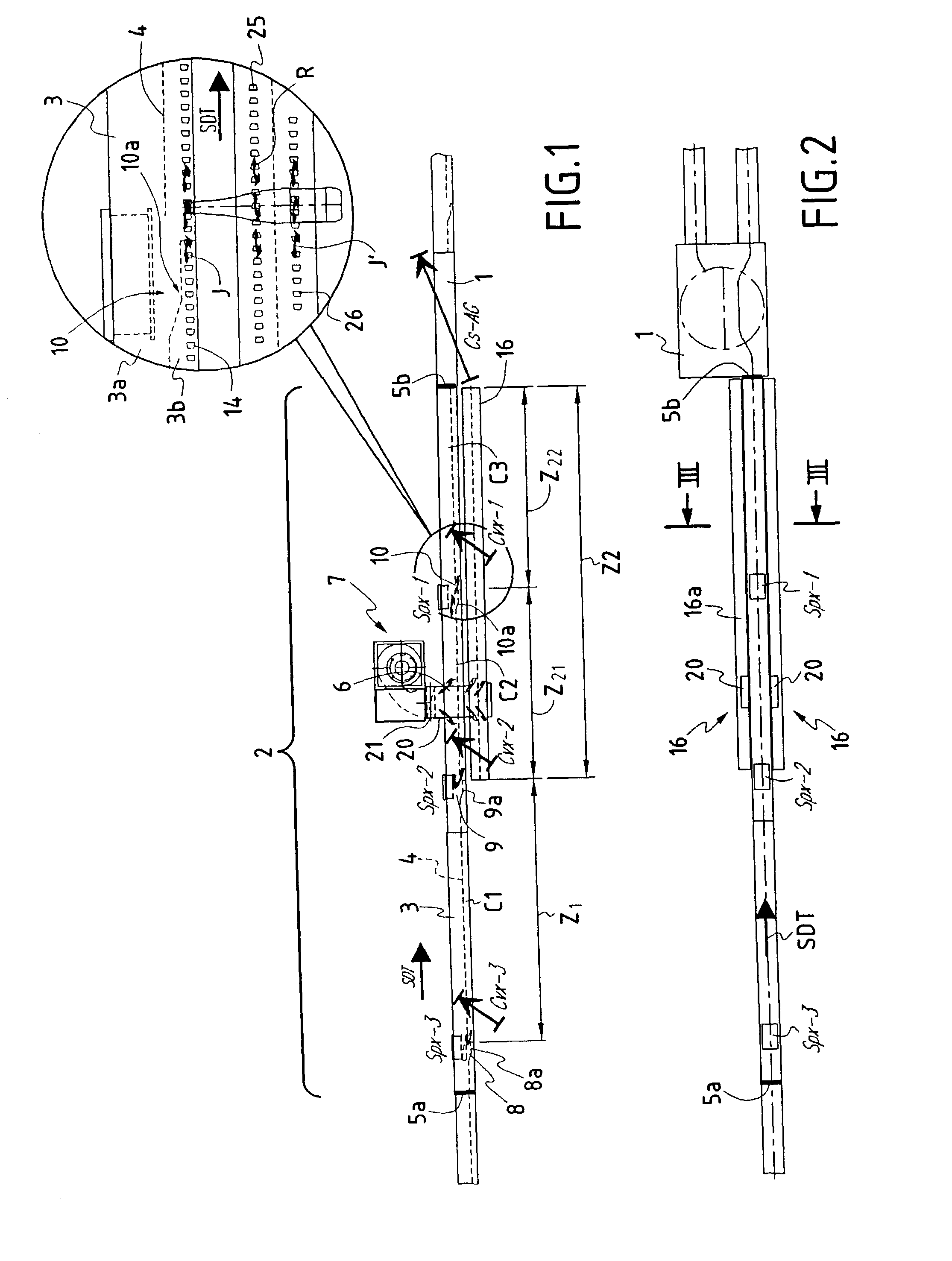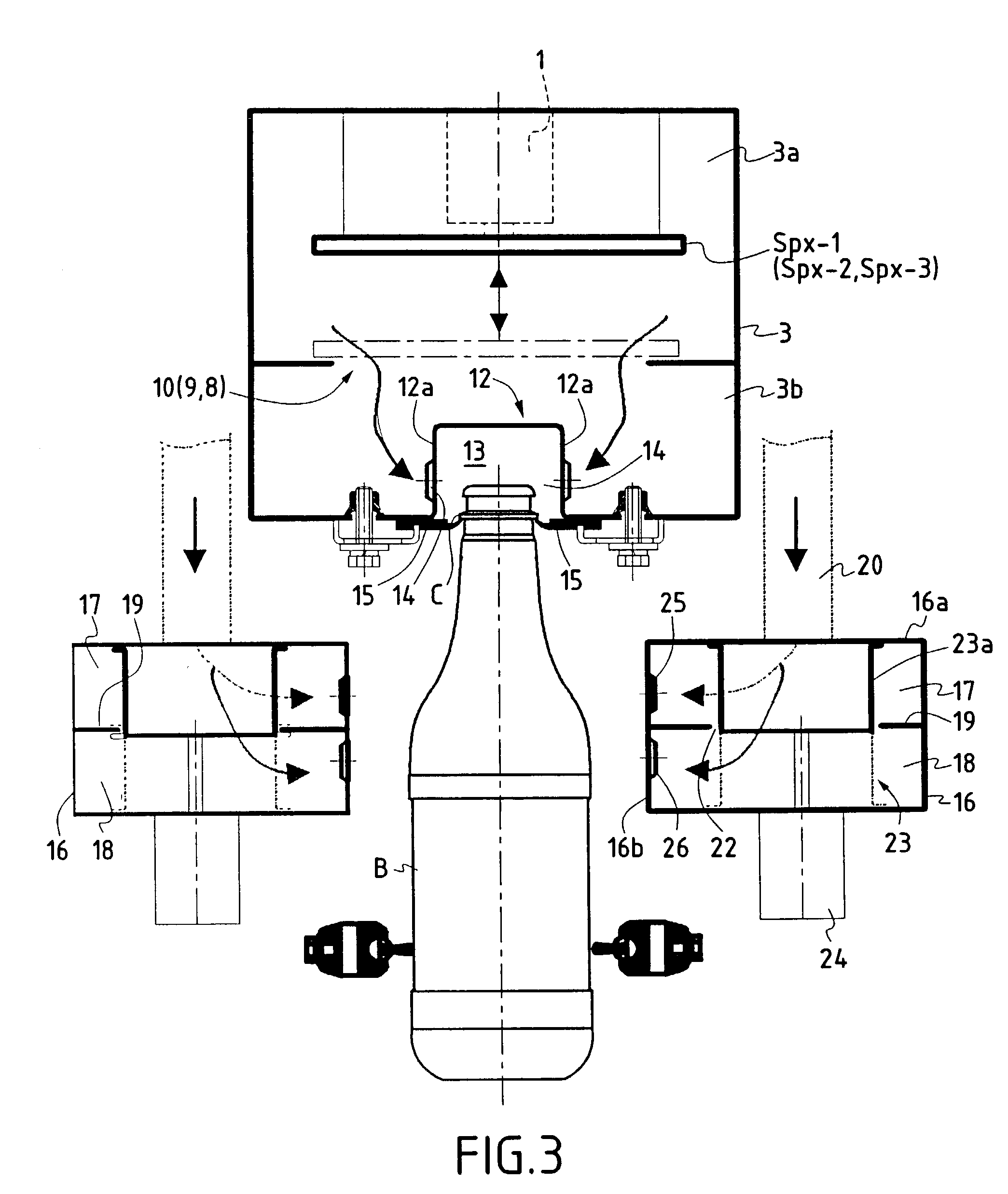Method for forming a train of suspended objects transported under the influence of air jets, and conveying section for carrying out said method
a technology of suspended objects and air jets, which is applied in the field of new methods of forming trains of objects, can solve the problems of affecting the throughput rate of conveyors and articles getting stuck under
- Summary
- Abstract
- Description
- Claims
- Application Information
AI Technical Summary
Benefits of technology
Problems solved by technology
Method used
Image
Examples
Embodiment Construction
[0026] FIGS. 1 and 2 show a portion of a conveyor line which is used for transporting bottles in a given transport direction, represented by the arrow referenced SDT, under drive from jets of air. In this portion, the conveyor line essentially comprises a switch (1 track to 2 tracks) preceded immediately upstream by a segment 2 for forming trains of bottles and made as a preferred embodiment of the invention. The switch 1 can be constituted, for example, by a turntable switch of the type described in European patent application No. EP-A-0 649 804.
[0027] The segment 2 comprises a main air duct 3 extending along the entire length of the segment, and subdivided into two inner compartments 3a and 3b by a longitudinal separator sheet 4. In the example shown, at each of its two ends, the main air duct 3 is closed by respective transverse closure sheets 5a and 5b that are substantially leaktight. It should be observed that in the context of the invention, implementing these two closure she...
PUM
 Login to View More
Login to View More Abstract
Description
Claims
Application Information
 Login to View More
Login to View More - R&D
- Intellectual Property
- Life Sciences
- Materials
- Tech Scout
- Unparalleled Data Quality
- Higher Quality Content
- 60% Fewer Hallucinations
Browse by: Latest US Patents, China's latest patents, Technical Efficacy Thesaurus, Application Domain, Technology Topic, Popular Technical Reports.
© 2025 PatSnap. All rights reserved.Legal|Privacy policy|Modern Slavery Act Transparency Statement|Sitemap|About US| Contact US: help@patsnap.com



